Crop rotation is an important rule that helps to achieve the highest quality and abundant harvest in any garden plot. If you regularly change the place of planting and planting different cultures, you can achieve that each plant will receive the necessary and proper amount of nutrients from the soil. Also, the "neighborliness" of vegetables also requires compliance, because many plant diseases are capable of being transmitted to a family of vegetables located next to each other.
Contents of
- What then to plant next year: table
- What to plant after strawberries, then planting strawberries and why?
- What to plant after cabbage, after which to plant cabbage and why?
- What to plant after cucumbers, after which to plant cucumbers and why?
- What to plant after tomatoes, after which to plant tomatoes and why?
- What to put after the bitter pepper, then put the bitter pepper and why?
- What to plant after the sweet pepper, then put the sweet pepper and why?
- What to plant after potatoes, after which to plant potatoes and why?
- What to plant after the garlic, after which to plant the garlic and why?
- What to plant after the beet, then plant the beets and why?
- What to plant after the onion, after which to plant the onion and why?
- What to plant after the pumpkin, then plant the pumpkin and why?
- What to plant after the radish, then plant a radish and why?
- What to plant after carrots, after which to plant carrots and why?
- What to plant after the eggplant, after which to plant the eggplant and why?
- What to plant after the peas, after which to plant the peas and why?
- What to plant after zucchini, after which to plant zucchini and why?
- What to put after parsley, after which to plant parsley and why?
- What to plant after sorrel, after which to plant sorrel and why?
- What to plant after the melon and watermelon, after which to plant melons and watermelons and why?
- What to plant after the beans, then plant the beans and why?
- What to plant after dill, then plant dill and why?
- What to plant after the corn, after which to plant corn and why?
- What to plant after the mustard, then plant mustard and why?
- Video: What to plant after strawberries?
What to put next year: table
Every trucker and experienced gardener knows that the sowing must necessarily be literate. Moreover, planting a variety of crops and plants: vegetables, berries, fruits, greens is not only a pleasant, but also a rewarding activity. It allows a person to develop, engage in health, exercise, breathe and enjoy nature, more to be outdoors, relax from city life, get aesthetic pleasure, grow food for himself.
Everyone who cultivates the garden daily, of course, will enjoy a good harvest. In order for it to be impressive, fertile and good, it is necessary to adhere to certain rules and lines for planting seeds, seedlings and so on.
Not every gardener knows that planting the same plants every year is impossible in the same place. The fact that the roots of plants tend to produce certain enzymes( peculiar discharges), which every year literally poison the soil and make it less fertile. It is for this reason that it is necessary to rotate each time, firstly, and secondly, to observe the alternation of sowing: what and what should be planted.
Planting each plant, you need to know in detail about how much time and seasons it can be in the soil, which takes time to plant and type of fertilizer.
Correct and organized planting of vegetables has many advantages:
- reduces the number of possible earth pests
- reduces the number of different pathogens for plants
- improves and increases the amount of nutrients in the soil
- allows the correct use of various fertilizers
- minimizes the negative impact of fertilizers on soil and plants
- allows more and deeper dig over the soil, which is useful for plants
The table for the correct planting and rotation of vegetables in the garden:
 the correct planting of vegetables with alternating, then planting the
the correct planting of vegetables with alternating, then planting the  table of compatibility and proper "neighborhood" of plants in the garden
table of compatibility and proper "neighborhood" of plants in the garden What to plant after the strawberry, then planting the strawberries and why?
Strawberry is a delicious and favorite berry, then how big will be your harvest depends on how carefully you choose a place for its planting. Strawberries can grow fertile in one place for no more than four years. After this time, you can notice such negative changes as:
- the berries become smaller
- the plant wears out and grows old
- the plant is more often sick
- the plant does not rarely die
The soil under strawberries is depleted in four years, is infected with a variety of diseases, there are many pests in it. Improve the yield and its quality will help transplant to the site where previously other crops grew.
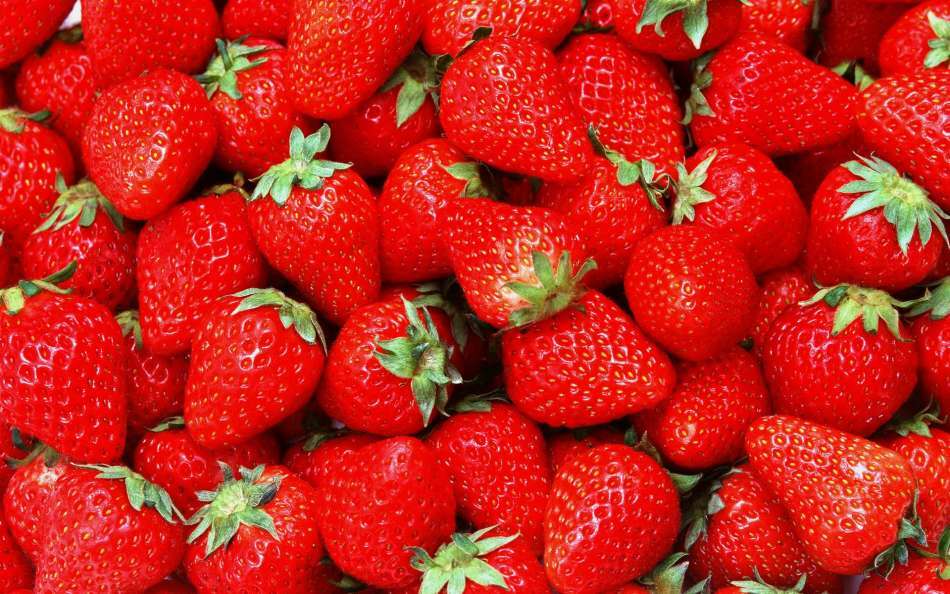 where to plant strawberries?after which to plant strawberries?
where to plant strawberries?after which to plant strawberries? To the place where the strawberry grew earlier, you can plant the opposite plant, for example - the root crop:
- potatoes
- celery
- carrots
- beet
- onion
- garlic
Root crop is the best option for planting, but this does not mean that you can notplant on this site other crops, for example zucchini or cucumbers. After you clean the area of strawberries, carefully dig it and carefully mineralize it.
It is important to know that you should not plant in the soil where strawberries grew before. The fact is that strawberries are rosaceous, which means that all related cultures, for example raspberries or blackberries, will be contraindicated. Fruit trees are also not recommended. Must pass a sufficient amount of time and it is necessary to produce all kinds of fertilization and "sanitation" of the soil.
Speaking about that, after which you can plant strawberries, it is worth noting that the plant is not whimsical and perfectly coexists on the soil, where previously there were a variety of root crops, legumes, herbs and even nightshade plants.
What to plant after cabbage, after which to plant cabbage and why?
Cabbage is planted by seedlings, it is important to buy only a stocky and healthy-looking seedling - this is a guarantee of a good harvest, tasty and useful fruits. Seedling must necessarily have strong and dense leaves. It should be planted in the ground, digging as far as the socket and carefully tamp the earth.
Also on the fertility of the crop will be affected by a good neighborhood, which will accompany the vegetable on the site. Several uncomplicated rules should be observed. It is best to plant cabbage in the soil where the harvest was earlier:
- of any
- root crops
- of cereals
- of melons
 how and after that should cabbage be planted?
how and after that should cabbage be planted? It is important to know that cabbage can not be grown more than three years in a row in the same soil. After you have harvested the crop, the soil must be dug up and mineralized.
It is known that cabbage after growing more than two years on one site is able to take all the most useful from the soil. After cabbage, you can plant cucumbers, potatoes, tomatoes or onions.
What to plant after cucumbers, after which to plant cucumbers and why?
Cucumbers can "tolerate" and bear fruit on the same soil for no more than four consecutive years. At the end of this time, it is necessary to change the plot, so that your harvest is good and abundant.
As practice shows, cucumbers grow best on the land where they previously fructified:
- any kind and kind of cabbage
- root crops( carrots are not desirable)
- legumes( best: peas and beans)
- plain and leafy greens
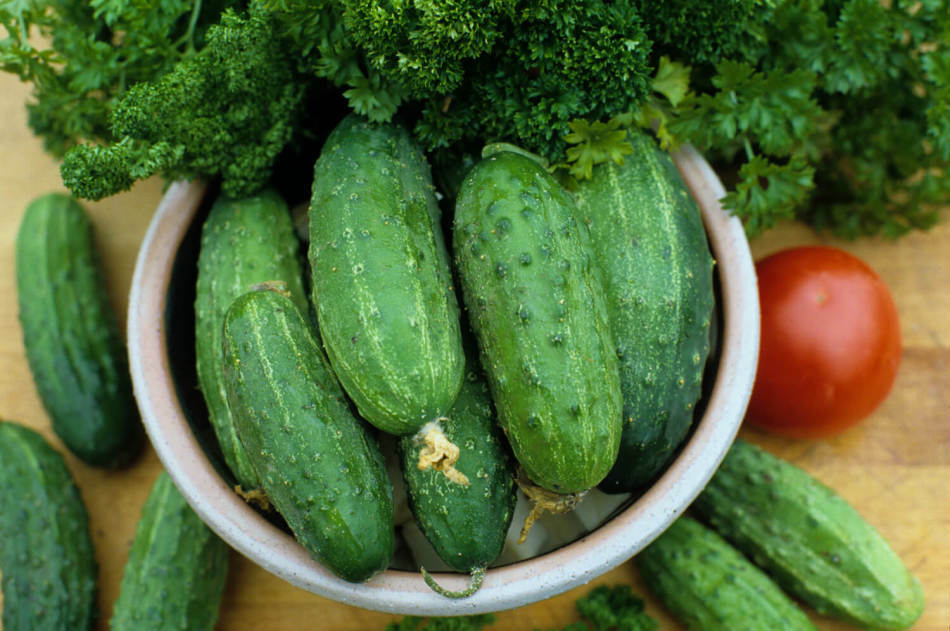 rules for planting cucumberson the garden plot of
rules for planting cucumberson the garden plot of A good crop of cucumbers can be favored by a successful neighborhood, which includes dill, various legumes, leafy greens, salads, fennel.
For this trucker important information is also what culture should be planted after cucumbers for the next year. With confidence, we can say that the best yields on this soil will be the harvest:
- bulbous cultures
- some root crops: beet or celery
- radish and radish
What to plant after tomatoes, after which to plant tomatoes and why?
Tomato is one of the most favorite vegetables. However, it is quite difficult to get a good and fertile harvest of tomatoes. To do this, you must follow all the rules for alternating planting in the soil of plants in the garden area.
First of all, you should know that tomatoes and related families - melons and nightshade, unfortunately, "sick" with the same diseases. It is for this reason that it is not recommended to plant a tomato in the soil where the vegetables native to it used to live, and also not to plant them in the neighborhood.
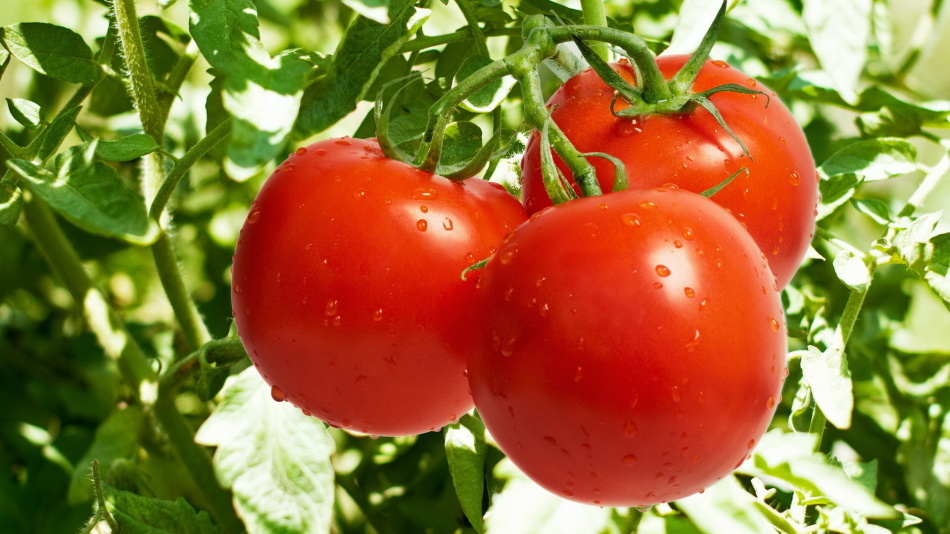 how to plant a tomato?
how to plant a tomato? Tomatoes will give a decent harvest in places where previously grown crops such as:
- melons( including pumpkin, melon and zucchini)
- some root crops: turnips, beets
- bulbous plants
- leafy greens and usual
It is strongly recommended not to plant tomatoes there,where
- potatoes
- any kind of pepper
- nightshade
- physalis
Once you have collected a good tomato crop and wish to transplant it to another site, the former soil will be suitable for many unpretentious crops: onion, legumes, some root crops and herbs.
After tomatoes can not put in the soil berries such as strawberries and strawberries, as soil diseases are quite capable of moving to the roots of these plants.
What to put after bitter pepper, then put bitter pepper and why?
Pepper is a vegetable of nightshade, so it is impossible to plant the plants of this family in the soil where peppers grew earlier. To plant pepper on the same soil where it grew and last year - it is impossible, it is necessary that from that moment it took about three years.
Pepper is a "whimsical" crop, which is very demanding on the quality of the soil.
best cultural precursor for hot pepper - it:
- onions
- cucumbers
- leafy greens
- grass
- cabbage
- legumes
 rotation bitter
rotation bitter pepper extremely ill after pepper in the soil will take root:
- potatoes
- beet
- carrots
- celery
- tomato
If you executeall the basic rules for fertilizing the soil and alternating the crop rotation, then the harvest of bitter pepper will please you not only with its quality and good quantity.
What to plant after the sweet pepper, then put the sweet pepper and why?
Sweet pepper is more whimsical than bitter pepper. However, the requirements for its landing are similar to all types of this vegetable.
The best pepper will survive after:
- any bulbous plants
- melons
- leaf and ordinary greens
- cabbage of any kind and variety
- of all legumes
After sweet pepper it is possible to plant root crops in the soil with confidence, they will give good and high quality yield.
 then properly put the sweet pepper?
then properly put the sweet pepper? What to plant after potatoes, after which to plant potatoes and why?
Potatoes are a frequent and popular vegetable in every vegetable garden. He is able to successfully fertility for several years in the same place, but to imagine that for him often to change place - it is simply impossible when every square meter counts. Therefore, the most important and important rule for compliance is to take into account the wishes for "neighborhood" and crop rotation of other cultures.
Potatoes are able to give a good harvest in the place where they grew up:
- various melons
- any bulbous cultures
- any bean plant
- some root crops: radish or radish
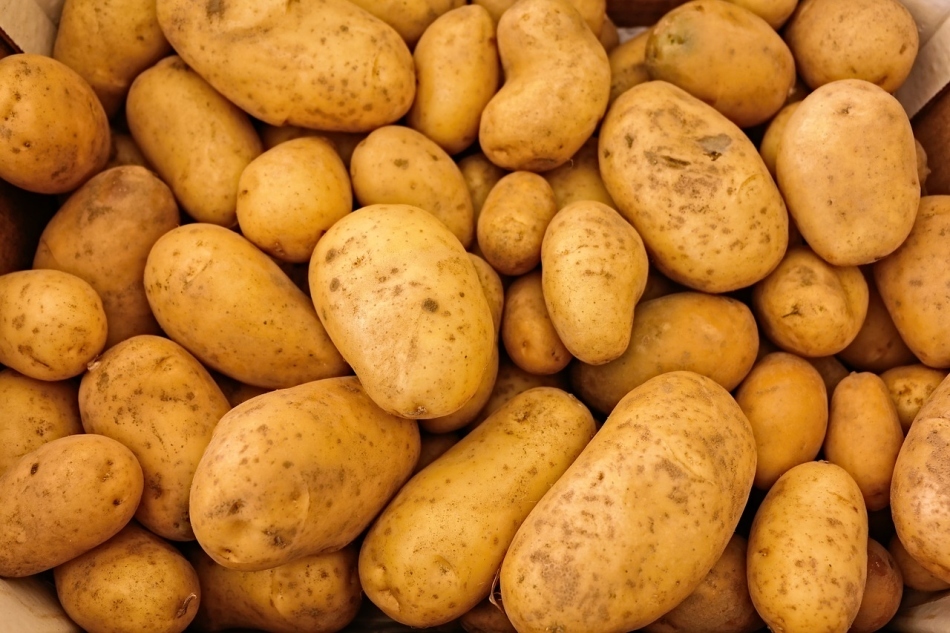 how to plant potatoes correctly?
how to plant potatoes correctly? It is worth noting that the soil after the potatoes is quite depleted and "worn out," therefore it is recommended to plant the siderat cultures, that is, those that will "revive" it and give it a "rest".Such plants will be:
- mustard
- grains
- oats
- legumes
- phacelia
- rape
- pumpkin
It is highly recommended not to plant in the "obsolete" and "empty" nutrients soil after potatoes such vegetables as:
- eggplants - they will yield a scanty cropor completely die
- tomatoes - they are extremely demanding on the quality of the
- pepper soil - it is fond of the soil and requires a lot of nutrients in it.
What to plant after the garlic, after which to plant the garlic and why?
In addition to its excellent qualities, this bulbous plant is able to "spoil" the soil by literally "sucking" most of the mineral substances out of it and attracting a lot of insect pests. The best crops that grew in the soil before planting garlic are any crops, with the only exceptions of oats and barley. A good soil is considered to be that on which previously grew:
- edible and leafy greens
- clover
- alfalfa
- melon vegetables
- strawberry
- strawberries and other berries
 followed by planting garlic?
followed by planting garlic? Garlic is not very well suited to soil and will lead to a bad crop if before it harvested any root crops: from potatoes, to carrots.
What to plant after the beet, then plant the beets and why?
You can get a good harvest of beet if you meet all the requirements for planting this vegetable in the soil. Beets are rather unpretentious to the soil and often get along even on the "wasted" site.
Beets will give a lot of large fruits if the soil in which it was planted before was the place of growth:
- of the vegetable of the melon family
- of any kind and
- variety of tomatoes of any
- variety of any
- variety of any
- root crops of any bulbous cultures
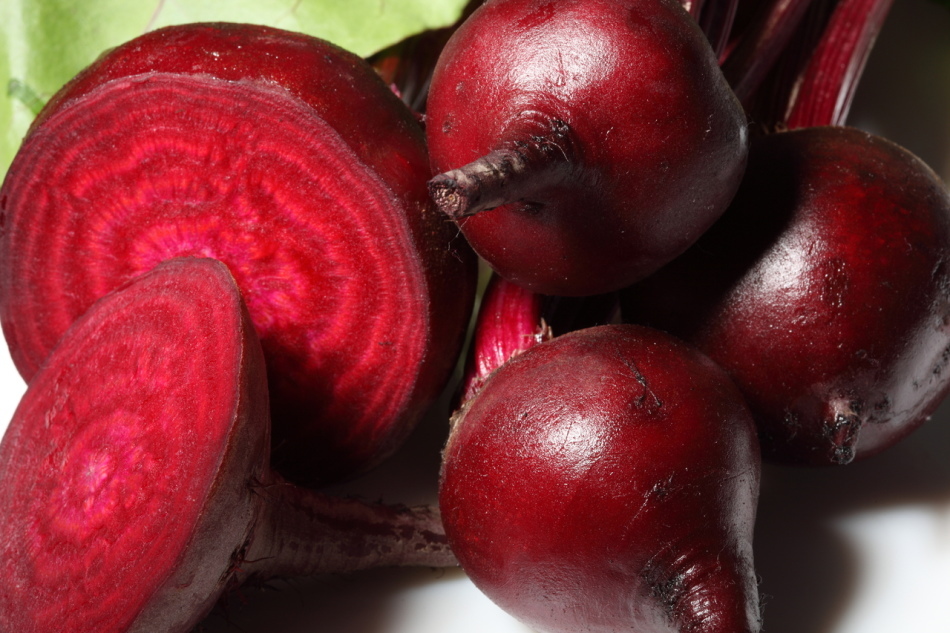 after whichshould be planted beets?
after whichshould be planted beets? After the beets in the soil, such crops as
- leafy green vegetables and any greens
- bulbous cultures: fennel, onion, garlic
- some unpretentious root crops
- any legumes
What to plant after the onion, after which to plant the onion and why?
Onions are not recommended for planting in the same soil for more than two years in a row.
It is best to plant the onion in the soil where the other bulbous plants did not grow earlier, because such soil is "empty" to the many micronutrients useful to it. The onion will take root there where they grew earlier:
- melon vegetables
- vegetables of the nightshade family
- root crops
- leafy vegetables and greens
- any leguminous crops
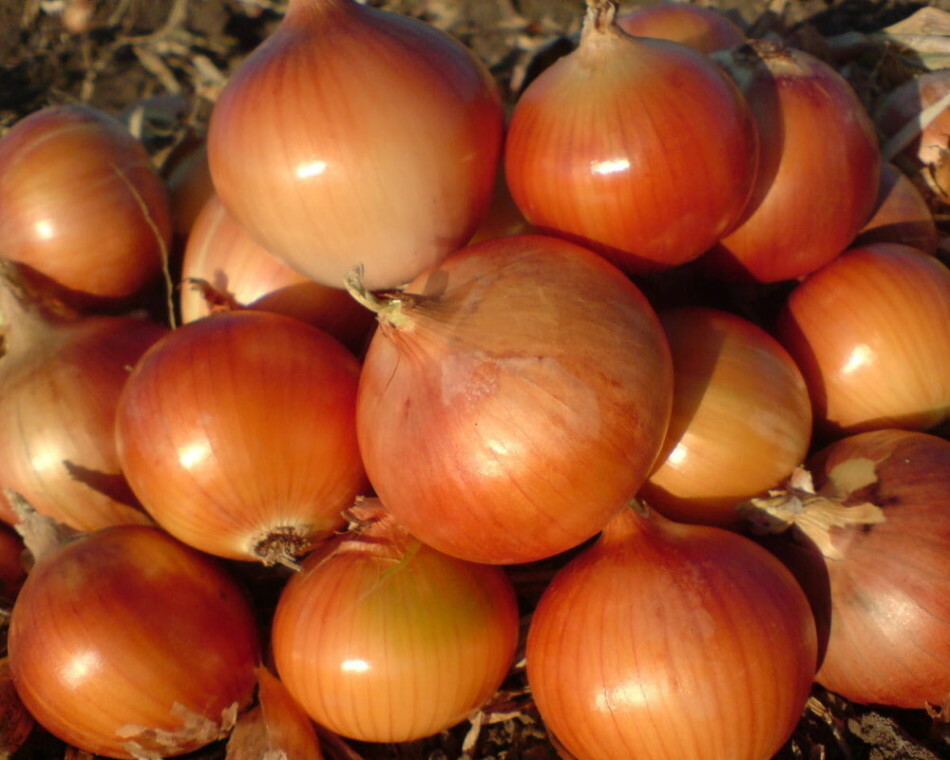 how to plant onions properly?
how to plant onions properly? A good crop can be obtained if after a harvest of onion the next year plant:
- root crops: carrots, beets, celery and other
- leguminous crops
- leafy vegetables and greens
- tomatoes
What to plant after the pumpkin, then plant the pumpkin and why?
Pumpkin is able to deplete the soil, taking from it some trace elements, but giving it completely different.
Favorable for pumpkin will be the soil where previously grown:
- any kind of pepper
- vegetables-roots
- cabbage
- bulbous vegetables
- leafy and common greens
- leguminous plants
- corn
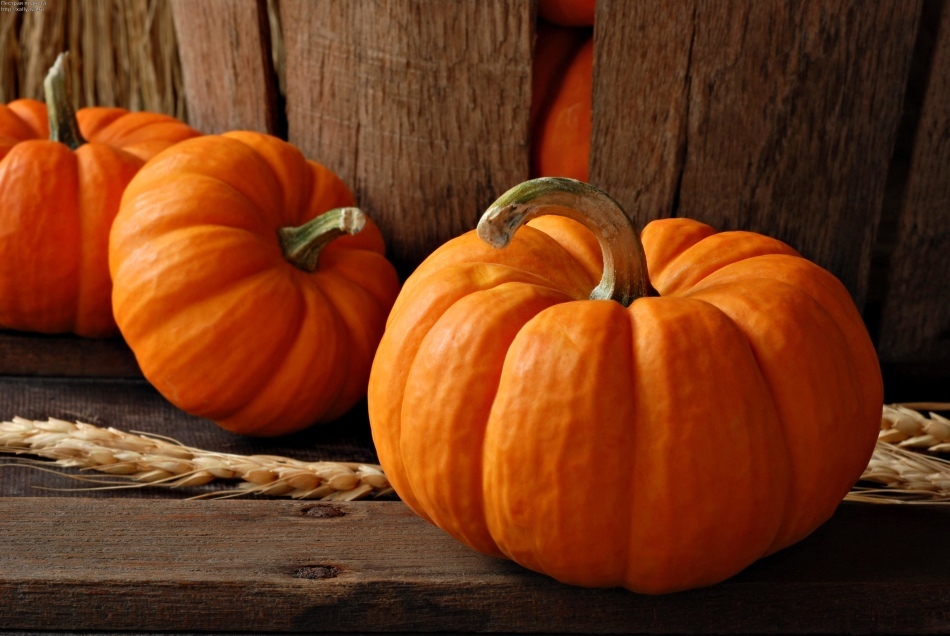 what should be planted after the pumpkin?
what should be planted after the pumpkin? Pumpkin should be planted where previously grown:
- bulbous plants
- root crops
- cabbage of any kind
- legumes
- leafy vegetables and greens
What to plant after the radish, then plant radish and why?
Radish is not the most whimsical vegetable, however its harvest closely depends on what was growing up before it. The best option is any bean culture. Other permissible plants include the following:
- vegetables of the melon family
- cabbage in any form
- tomatoes and tomatoes
- potatoes and other root crops
After the radish the soil will be well received and will please the crop from such plants as:
- root crops
- melon vegetables
- greens
- leafy vegetables
 how to plant a radish?
how to plant a radish? What to put after carrots, after which to plant carrots and why?
Carrots "love" the prepared soil: plowed, dug and fertilized. You can plant carrots almost after any plant, but not after the carrot itself.
Best carrots will survive where they used to grow:
- bulbous vegetables
- tomatoes and other vegetables of the Solanaceous family
- cabbage of any kind and any kind
- potatoes and other root crops
- salad and leafy vegetables
- greens
After carrots,as:
- vegetables of the melon family
- salad and any other leafy vegetables
- cabbage of any kind
- mustard
- any greens
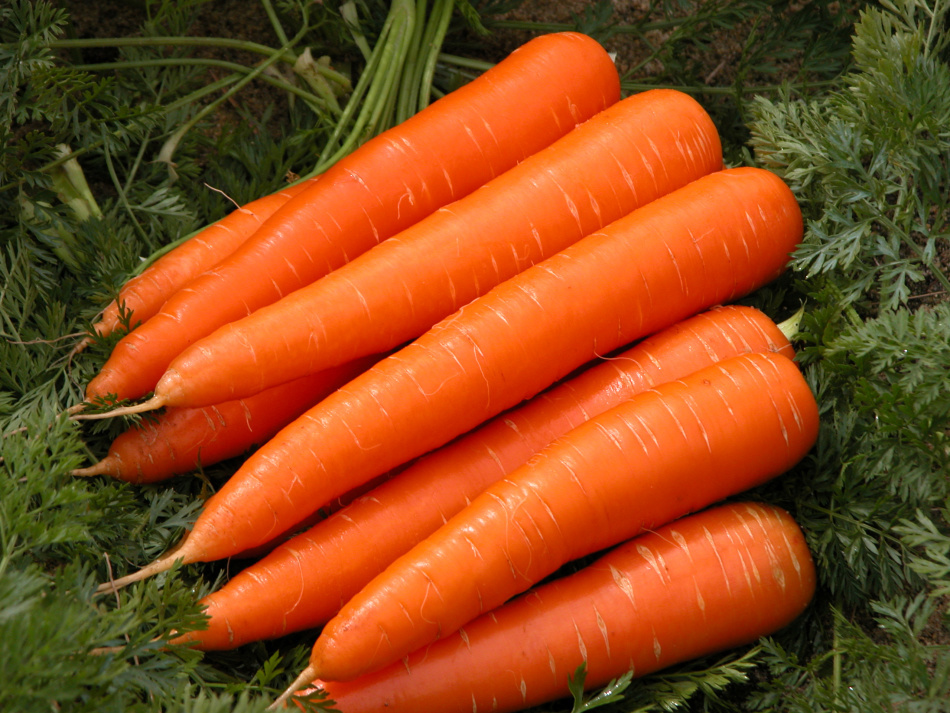 how to plant carrots?after which to plant carrots?
how to plant carrots?after which to plant carrots? What to plant after the eggplant, after which to plant the eggplants and why?
Ogorodniki know that eggplants are able to perfectly live with many cultures. They perfectly coexist with Solanaceae, but they do not grow in the soil after them.
Eggplants should not be planted in the soil after:
- pepper of any variety and any kind of
- tomatoes and other "nightshade" vegetables
- potatoes, as well as some other root crops: carrots, beets
The eggplants are best suited where they previously grew:
- cabbageany variety and type
- greens and leafy vegetables
- salad
- leguminous crops
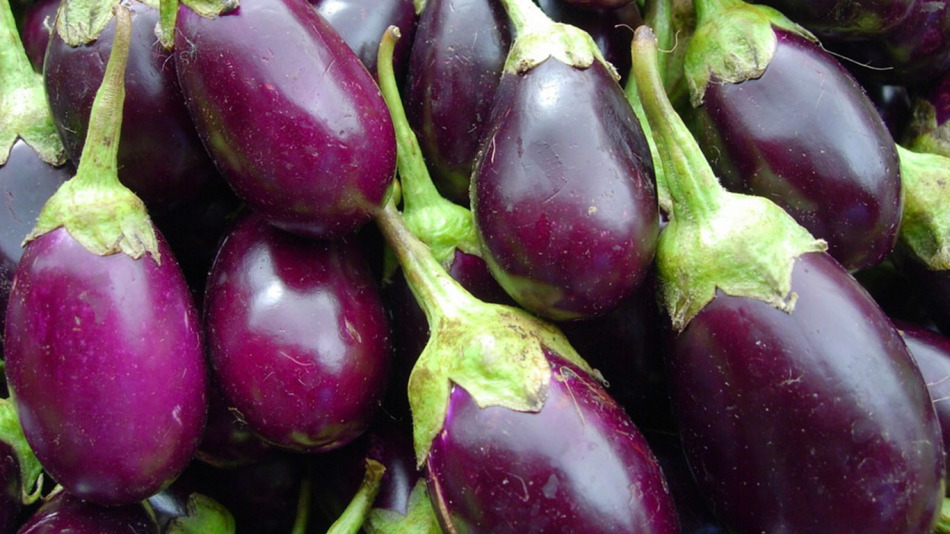 followed by planting eggplant?
followed by planting eggplant? What to plant after peas, after which to plant peas and why?
Pulses, in particular peas, are excellent precursors to such crops as:
- vegetables of the Solanaceae family
- vegetables of the melon family
- cabbage of any kind and variety
- bulbous vegetables
- root crops
It should be noted that after legumes and peas it is possible to plant virtually any culture,since the soil is considered "rested".
 after which it is necessary to plant peas?
after which it is necessary to plant peas? What to plant after zucchini, after which to plant zucchini and why?
Squash, like the pumpkin, can take any soil, even the one that is very "tired" from the previous harvest. They are not whimsical in cultivation and everything they need is water and light. Zucchini eat quite different nutrients, unlike any root vegetables and nightshade and often successfully adjacent to these vegetables.
Get a good and high quality zucchini yield if you plant them in the soil where they were harvested:
- bulbous plants
- bulbous plants
- greens and leafy vegetables, salad
- nightslivorous cultures
- root crops
Zucchini feeds on the soil at its level and therefore the most successful will be the subsequent planting of plants of completely different families:
- will get well and yield a good crop tomatoes
- extremely successful this placewill be for any root crop
- leguminous cultures
- any cabbage
- eggplant
- bulbous plants
Courgettes in any case can not be planted next door to othersmelons and vegetables because they need the same nutrient reserve of soil materials and can hurt the same "disease".
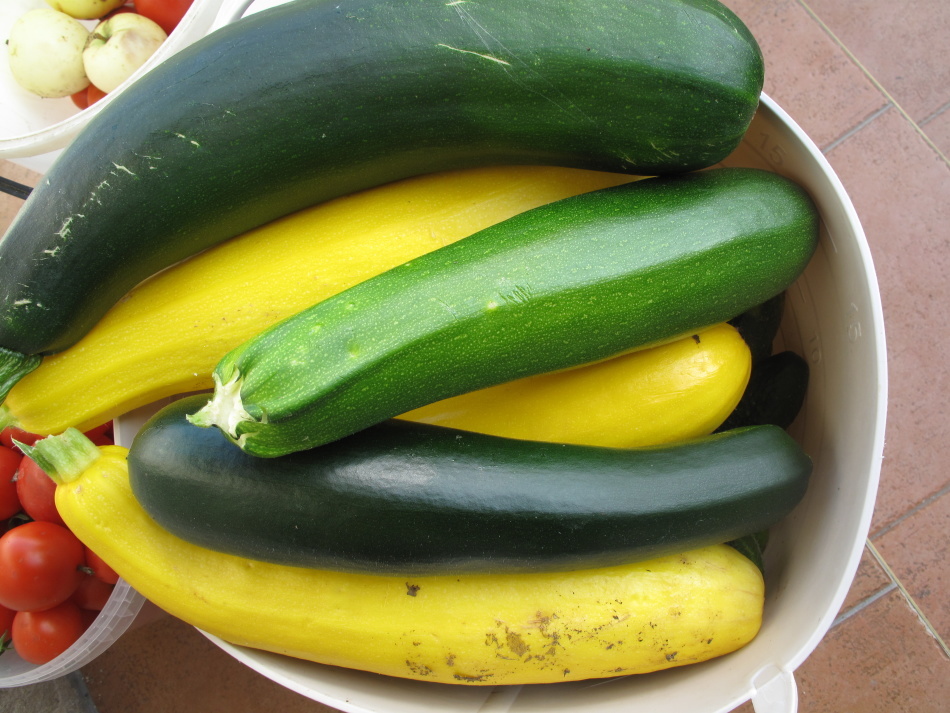 then plant a vegetable marrow?
then plant a vegetable marrow? What to put after parsley, after which to plant parsley and why?
Success of a good and high-quality harvest is a constant change of sites for planting vegetables. So the cultures have the opportunity to receive the necessary nutrients, grow large fruits and not die.
If every year for several years to plant greens in the same place, it is unlikely that you can achieve a good harvest. In the end, the soil is depleted, does not have the right set of microelements, and the plant is doomed to death. Parsley is greens that can be planted anywhere where it has not yet grown:
- after nightshade vegetables
- at the place where
- roots grows where melons from
- were formerly grown in the soil after bulbous plants
The only restriction is another green leafy vegetables thateat the same set of trace elements. It is not advisable to sow parsley where there was formerly sorrel, salad, dill, basil and other similar plants.
 after which to plant parsley?
after which to plant parsley? After parsley in the ground it is allowed to plant any vegetable culture - everything, except for greenery.
What to plant after sorrel, after which to plant sorrel and why?
Like any leafy vegetables, as well as greenery - sorrel feeds on microelements at a certain soil level. You can even sit down to the sorrel, where tomatoes, potatoes and other vegetables were grown there for many years.
Sorrel is only able not to take root in the soil that for many years yielded any greens, lettuce, spinach, parsley and dill. After sorrel, it is recommended to plant absolutely any family of vegetables.
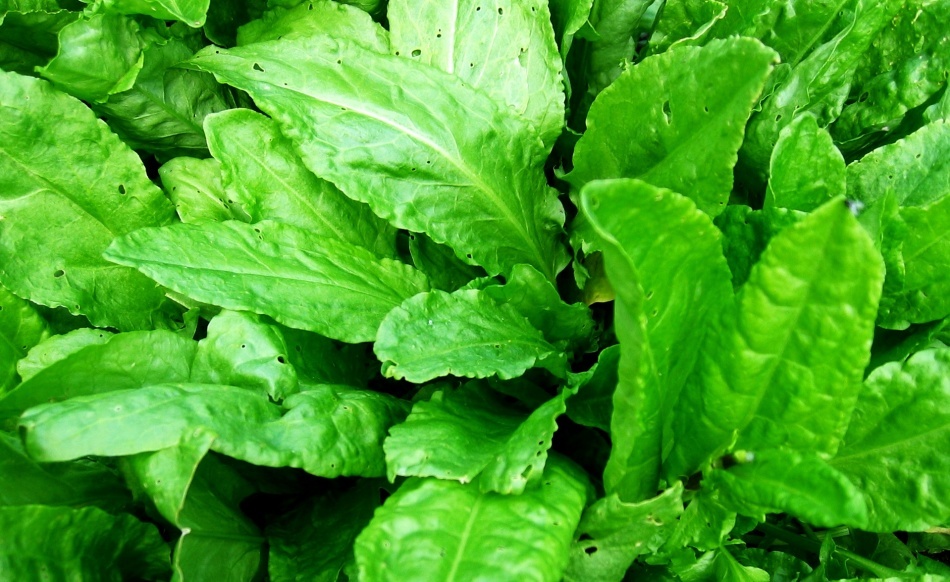 after which to plant sorrel?
after which to plant sorrel? What to plant after the melon and watermelon, after which to plant melons and watermelons and why?
Melon and watermelon are fruits of the melon family. They do not have deep roots and grow where the soil is well moistened and there is an abundance of light. It is known that in order to obtain an impressive and good harvest of these fruits, they must necessarily grow separately from each other and from related cultures. All because the soil is able to spread their "family" diseases and quickly deplete its stock of essential nutrients.
Best and melon and watermelon will bear fruit where they were previously planted:
- nightshade vegetables
- any root crops
- legumes
- cabbage
- greens
- leafy vegetables and salad
- bulbous vegetables
Taking from the soil the necessary nutrients melons leave a reserve of microelements thatFavorably affect the yield of other crops. Therefore, after the melon and watermelon in the soil can be planted:
- any root crops
- tomatoes, eggplants, pepper
- bulbous plants
- leguminous plants
- greens and leafy vegetables
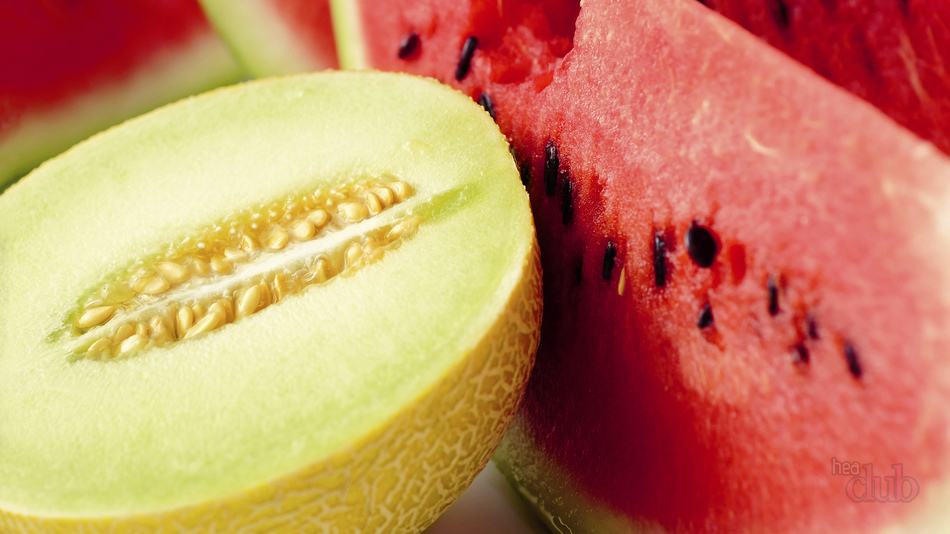 where and after that plant a watermelon and melon?
where and after that plant a watermelon and melon? What to plant after the beans, then plant the beans and why?
Unlike other legumes, it can be said that beans are the most demanding plant in the whole family. It always gives a good harvest only if the soil is full of nutrients, moistened and saturated with fertilizer. Beans do not "tolerate" weeds and love clean land from them.
Beans will never rise where the sunflower harvest was previously harvested. However, it will be well received after:
- root crops
- nightsong
- corn
- cereals
- melons
Beans are a good vegetable precursor for most other plants. But it is worth knowing that it is the beans that should be transplanted annually, as it is often frequent and abundant to "hurt" it.
 then plant the beans?
then plant the beans? What to plant after dill, then to plant dill and why?
Dill is the most unpretentious plant that can grow in absolutely any place and in any soil. Most often, the dill spreads itself and moves around the garden plot, choosing the most comfortable place for yourself. Dill does not require any clear observance of crop rotation and neighborhood and always gives a large-scale and good harvest. Dill can be planted and sown safely where the soil requires "rest".
 after which to plant dill?
after which to plant dill? What to plant after the corn, after which to plant corn and why?
Corn is a culture that very much "loves" plowed soil, moistened and fertilized with fertilizers. You can get a good harvest of this plant if you plant it on soil that was previously sown with leguminous crops or other grain plants. The quality of the harvest also depends on how good the regular feeding of the culture will be.
After corn, you can safely plant such crops as:
- peas and other leguminous crops( soybeans or beans)
- some root crops if the soil is sufficiently moistened, for example, beets or carrots
- perennial greens and leafy vegetables
- winter cereals
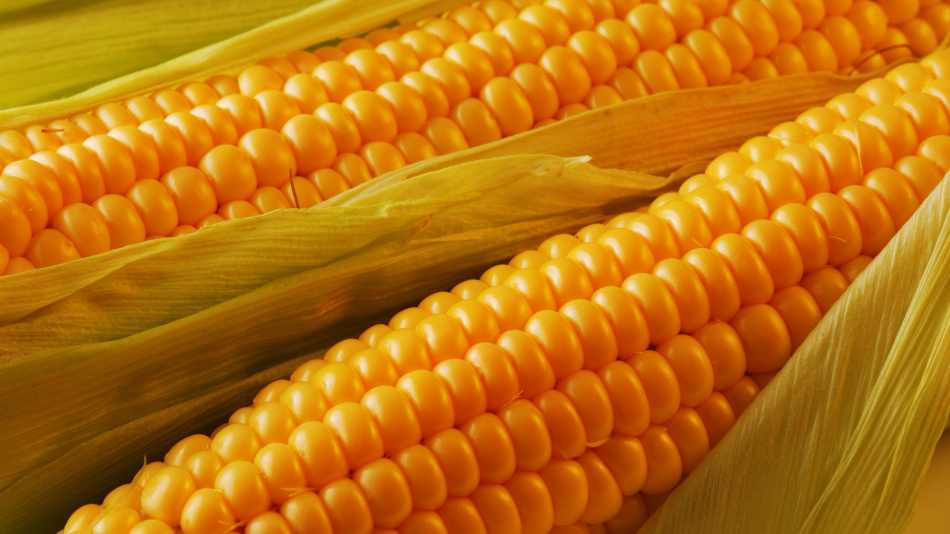 followed byto plant corn?
followed byto plant corn? What to plant after the mustard, then plant mustard and why?
Mustard is a popular oilseed spring crop, which is extremely useful to include in a crop rotation on any garden plot. Mustard "does not age" and does not "drain" the soil and therefore it is often planted when the earth is to give a short or long "rest" from the nightshade vegetables or vegetables-roots.
Progash, as well as cereals - the best option, which can grow on the soil to the mustard. In this case, it will give the highest quality and abundant harvest.
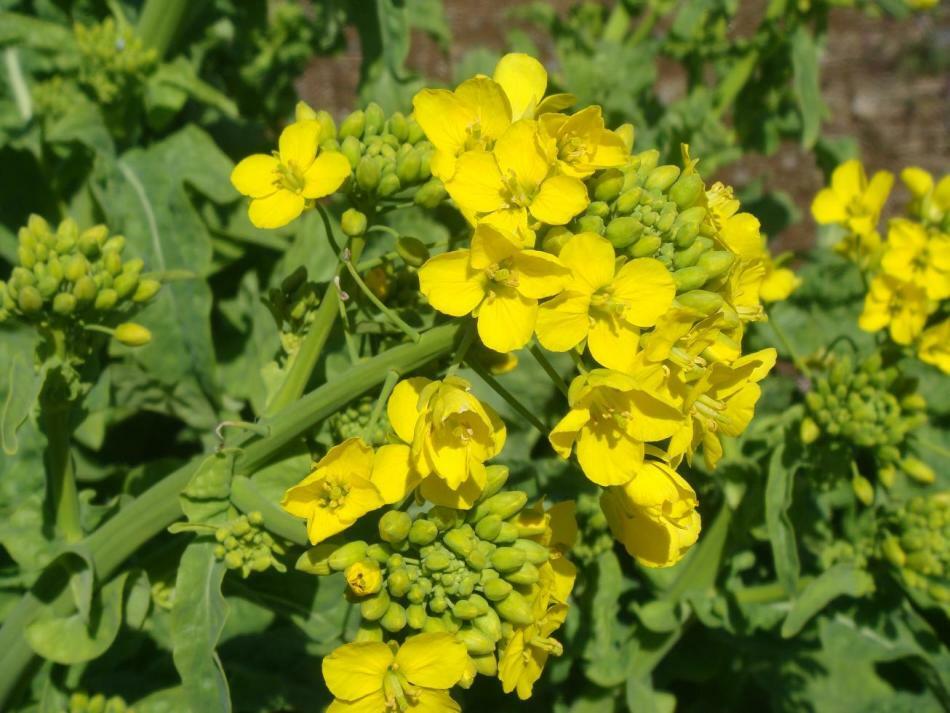 then plant mustard?
then plant mustard? 